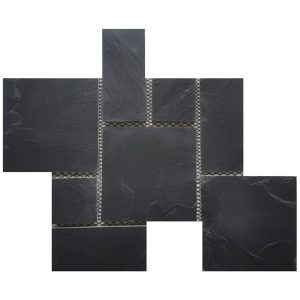Bluestone, with its striking blue-gray hues and natural appeal, has long been a popular choice for landscaping, construction, and design projects. Its timeless beauty and durability make it a sought-after material for a wide range of applications. In recent years, the introduction of cultured bluestone has revolutionized the industry, offering a more sustainable and versatile alternative to traditional bluestone. In this article, we will delve into the world of cultured bluestone, exploring its origins, characteristics, uses, and benefits.
Origins of Cultured Bluestone
Cultured bluestone is a man-made material that replicates the look and feel of natural bluestone through a specialized manufacturing process. While natural bluestone is quarried from the earth and cut into various shapes and sizes, cultured bluestone is produced using a combination of natural aggregates, pigments, and binders that are molded and shaped to mimic the appearance of natural stone.
The development of cultured bluestone was driven by the need for a more sustainable and cost-effective alternative to natural stone. By utilizing recycled materials and reducing the environmental impact of quarrying, cultured bluestone offers a greener solution for projects that require the beauty of bluestone without the associated drawbacks of natural stone.
Characteristics of Cultured Bluestone
Cultured bluestone shares many of the same characteristics as natural bluestone, including its distinctive color palette, texture, and durability. The manufacturing process allows for a high level of customization, with the ability to create a wide range of shapes, sizes, and finishes to suit the specific requirements of a project.
One of the key advantages of cultured bluestone is its uniformity and consistency. Unlike natural stone, which can vary in color and texture due to geological factors, cultured bluestone offers a more predictable and controlled aesthetic. This makes it easier to match pieces and achieve a cohesive look across a project, whether it be a patio, walkway, or facade.
Uses of Cultured Bluestone
Cultured bluestone is a versatile material that can be used in a variety of applications, both indoors and outdoors. Its durability and resistance to wear make it an ideal choice for high-traffic areas such as driveways, pathways, and patios. The sleek, modern aesthetic of cultured bluestone also lends itself well to contemporary design schemes, adding a touch of sophistication to any space.
In addition to its practical uses, cultured bluestone is also popular in the realm of landscaping and hardscaping. From retaining walls and garden borders to water features and outdoor kitchens, cultured bluestone can be incorporated into a wide range of outdoor projects to create a cohesive and visually appealing environment.

Benefits of Cultured Bluestone
The benefits of using cultured bluestone extend beyond its aesthetic appeal and versatility. As ledgestone sale -made material, cultured bluestone offers several advantages over natural stone that make it a preferred choice for many designers, contractors, and homeowners.
1. Sustainability: Cultured bluestone is made from recycled materials and produced using environmentally friendly practices, making it a more sustainable option compared to natural stone. By reducing the demand for quarried stone, cultured bluestone helps to conserve natural resources and minimize the impact on the environment.
2. Cost-Effectiveness: Cultured bluestone is often more affordable than natural stone, making it a budget-friendly choice for projects with limited funds. The manufacturing process allows for greater efficiency and control over production costs, resulting in a more cost-effective solution for those looking to achieve the look of bluestone without breaking the bank.
3. Durability: Cultured bluestone is engineered to be highly durable and resistant to wear and tear, making it an ideal choice for outdoor applications that require long-lasting performance. Unlike natural stone, which can be prone to cracking, chipping, and staining, cultured bluestone offers a more reliable and low-maintenance option for projects that demand longevity.
4. Customization: The versatility of cultured bluestone allows for a high degree of customization, with the ability to create unique shapes, sizes, and finishes to suit the specific requirements of a project. Whether you prefer a smooth, polished surface or a textured, rustic look, cultured bluestone can be tailored to your preferences to achieve the desired aesthetic.
In conclusion, cultured bluestone represents a modern and sustainable alternative to natural stone, offering a wide range of benefits for projects that require the beauty and durability of bluestone without the associated drawbacks. Its versatility, consistency, and cost-effectiveness make it a popular choice for a variety of applications, from landscaping and hardscaping to interior design and architecture. As the demand for environmentally friendly materials continues to grow, cultured bluestone is poised to become an increasingly prominent player in the world of construction and design.
